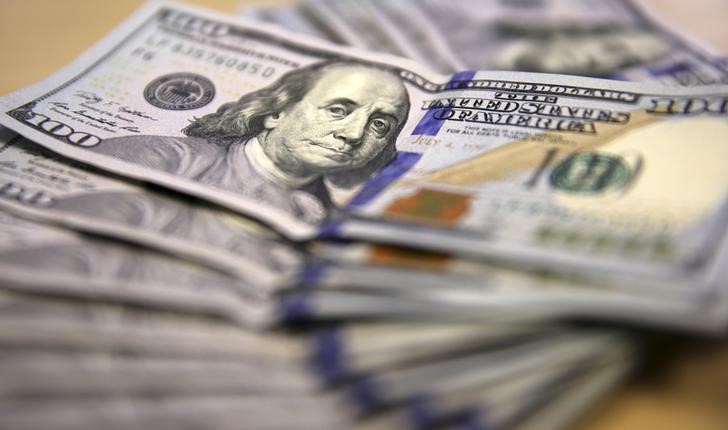Forex
Dollar on the rise ahead of key inflation data


© Reuters.
Investing.com – The U.S. dollar gained in early European trade Monday, rebounding from losses after Friday’s payrolls data ahead of this week’s release of inflation data from the world’s two largest economies.
At 03:05 ET (07:05 GMT), the , which tracks the greenback against a basket of six other currencies, traded 0.2% higher at 102.082, climbing away from Friday’s low of 101.73.
Dollar rebounds ahead of key inflation data
The U.S. economy added fewer than expected in July, data on Friday showed, resulting in the dollar falling to a one-week low against a basket of currencies.
However, the jobs report also showed solid and a decline in the , indicating that the labor market remains tight and inflationary pressures remain.
With the Federal Reserve clearly looking at the incoming data ahead of September’s policy meeting, the attention now turns to Thursday’s U.S. data release for guidance.
Lower numbers would make it more likely that policymakers will hold off raising interest rates at their upcoming September meeting after a quarter-percentage-point hike last month, but expectations are for to have risen 4.7% on an annual basis in July.
Yuan weak amid deflation concerns
rose 0.7% to 7.1923, with the yuan weak ahead of Tuesday’s Chinese inflation data, with set to fall 0.5% on an annual basis in July, while is likely to have contracted further.
Markets were also focused on more cues from the Chinese government on its plans to stimulate economic growth after officials offered few concrete details on their planned spending measures.
German industrial production slumps
fell 0.3% to 1.0979 after slumped 1.5% on the month in June, a dramatic fall from the revised slip of 0.1% the prior month.
The hiked interest rates earlier this month, but signs that the German economy, the largest in the eurozone, is still struggling could prompt the ECB policymakers to call a halt to its tightening cycle in September.
U.K. house prices fall again
fell 0.2% to 1.2724 after data from mortgage lender Halifax showed that fell in July for the fourth time in a row in month-on-month terms, dropping by 0.3% from June and in terms they were down by 2.4%.
The U.K. is to release second quarter data on Friday which is expected to tick fractionally higher, indicating that the overall economy remains all but stagnant.
Elsewhere, rose 0.4% to 142.34, even as some members of the Bank of Japan warned that could overshoot expectations this year.

 Forex3 years ago
Forex3 years agoForex Today: the dollar is gaining strength amid gloomy sentiment at the start of the Fed’s week

 Forex3 years ago
Forex3 years agoUnbiased review of Pocket Option broker

 Forex3 years ago
Forex3 years agoDollar to pound sterling exchange rate today: Pound plummeted to its lowest since 1985

 Forex3 years ago
Forex3 years agoHow is the Australian dollar doing today?

 Cryptocurrency3 years ago
Cryptocurrency3 years agoWhat happened in the crypto market – current events today

 World3 years ago
World3 years agoWhy are modern video games an art form?

 Commodities3 years ago
Commodities3 years agoCopper continues to fall in price on expectations of lower demand in China

 Economy3 years ago
Economy3 years agoCrude oil tankers double in price due to EU anti-Russian sanctions





















